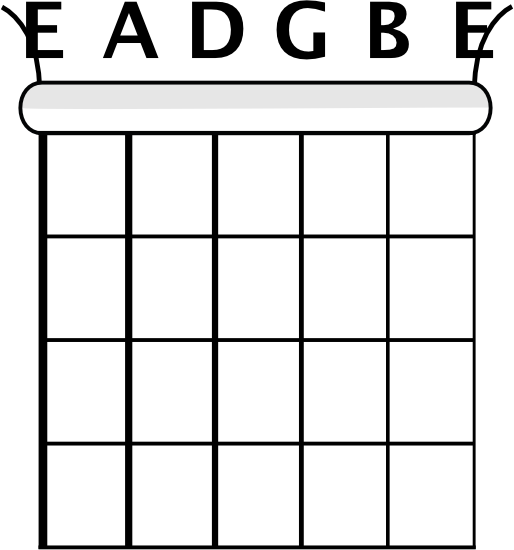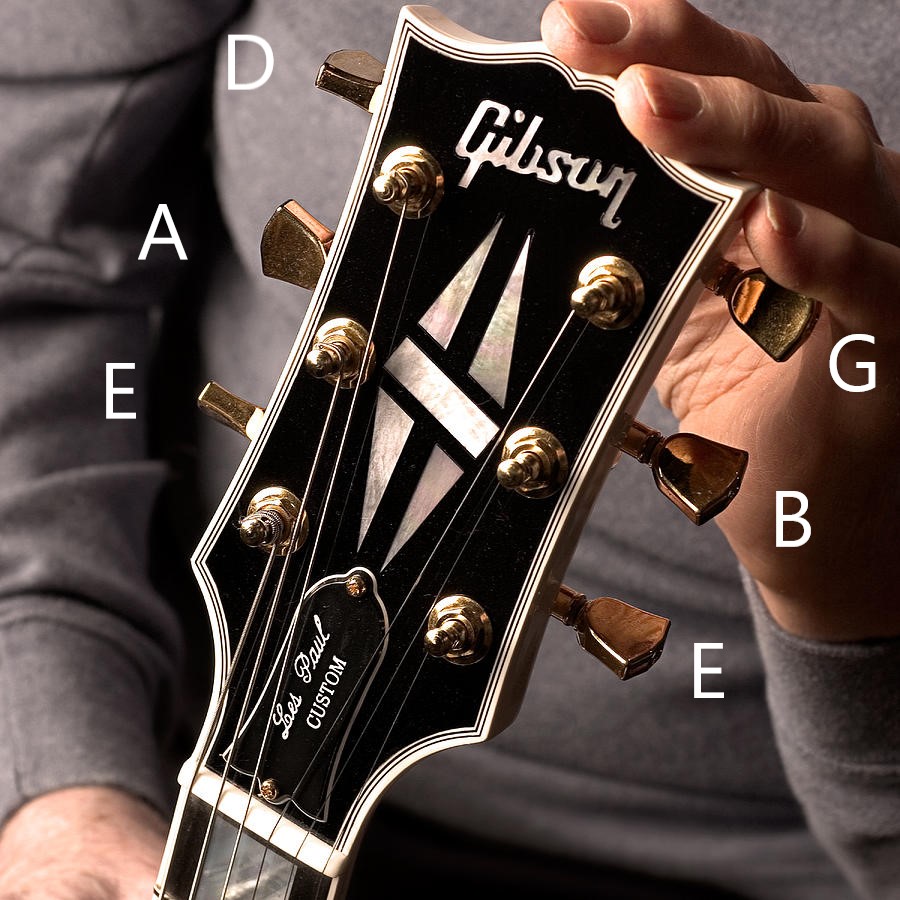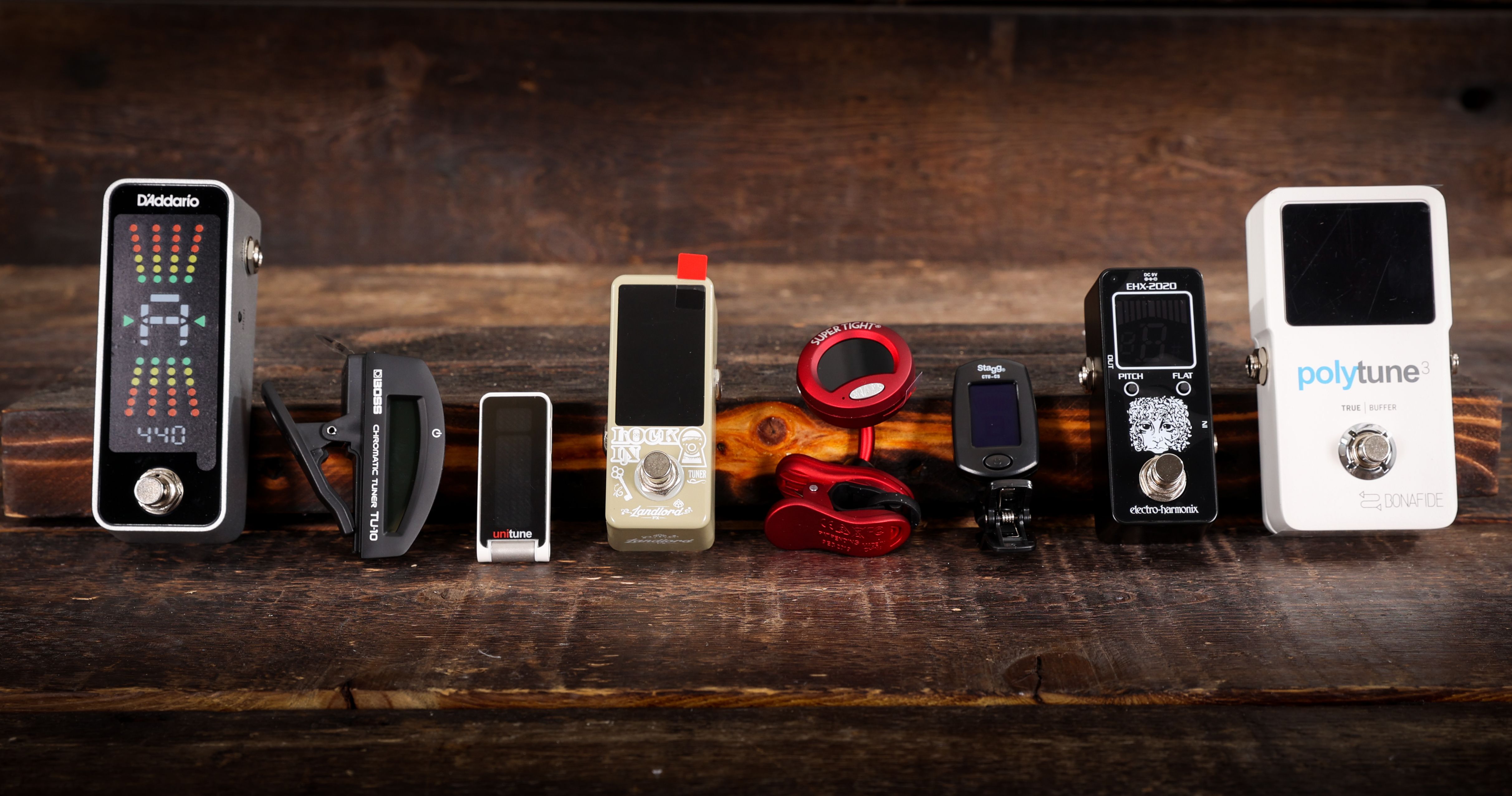- Tuning a Guitar in Standard Tuning
- How to Tune a Guitar
- How Do You Know if Your Guitar is in Tune?
- What Type of Guitar Tuner Should I Buy?
- Other Guitar Tuner Options
- How to Tune a Guitar Without a Tuner
- How Often Should I Tune my Guitar?
- Conclusion
If you’re reading this blog, the chances are you are the start of your guitar-playing journey. This is a really exciting time and you’re no doubt raring to go. However, there is one really important skill you need to learn before playing your first notes – tuning your guitar! You can be the best guitarist in the world, but if your guitar is out of tune, it is not going to sound good! In this blog we explain how to tune a guitar and look at some of the best ways to go about it.
Tuning a Guitar in Standard Tuning
Standard tuning is, as the name suggests, the most commonly used tuning pattern for both electric and acoustic guitars. In standard tuning, the guitar strings are tuned (from thickest to thinnest) E, A, D, G, B, E.

We recommend coming up with a silly mnemonic to help you remember the notes. Here are some of our favourites:
- Eddie And Dave’s Guitars Beat Everyone
- Even Average Dogs Get Bones Everyday
- Elephants And Donkeys Grow Big Ears
Well, you get the idea! The possibilities are endless so get creative and think of one that’ll help you remember the notes!
How to Tune a Guitar
Now that you know the right notes, it’s time to actually tune your guitar! But how, we hear you ask! Let’s start by looking at the guitar’s headstock, or the bit at the top! Assuming you’re learning on a six-string guitar (which we strongly recommend you do) you will see six identical keys around which the strings are wound. These are called tuning machines or machine heads, but it’s perfectly acceptable to refer to them simply as tuners. When you turn each machine head, you either increase or decrease the amount of string tension, which in turn, alters the pitch of the string.

Machine heads on a Gibson Les Paul
How Do You Know if Your Guitar is in Tune?
If you’re fortunate enough to possess perfect pitch, you will be able to tune your guitar using only your ears. However, if, like the majority of us mere mortals, you don’t have perfect pitch, you’ll need something to help you. We recommend using an electronic guitar tuner, which you can pick up for a little as a few pounds! Electronic tuners are the quickest and most accurate way of tuning your guitar and they’re incredibly easy to use.
In most cases, when you play each string, a series of lights or an oscillating ‘needle’ will move back and forth, indicating how in or out of tune the note is. The tuner detects which note you are playing and tells you whether it is sharp or flat. When the note on the screen matches the note you’re trying to find and the needle/lights are in the middle, you’re in tune! Simple!
What Type of Guitar Tuner Should I Buy?
 A selection of clip on and pedal style tuners
A selection of clip on and pedal style tuners
Electronic guitar tuners come in all shapes and sizes. Deciding which one is best for you depends largely on your budget and where you intend to use it. Here are the main options:
Clip-on – If you’re just starting out, it’s unlikely you will be playing to an audience any time soon, so a clip-on guitar tuner is a great option that won’t break the bank. They are very affordable and easy to use. As the name suggests, simply clip one onto your guitar’s headstock and you’re away!








Responses & Questions